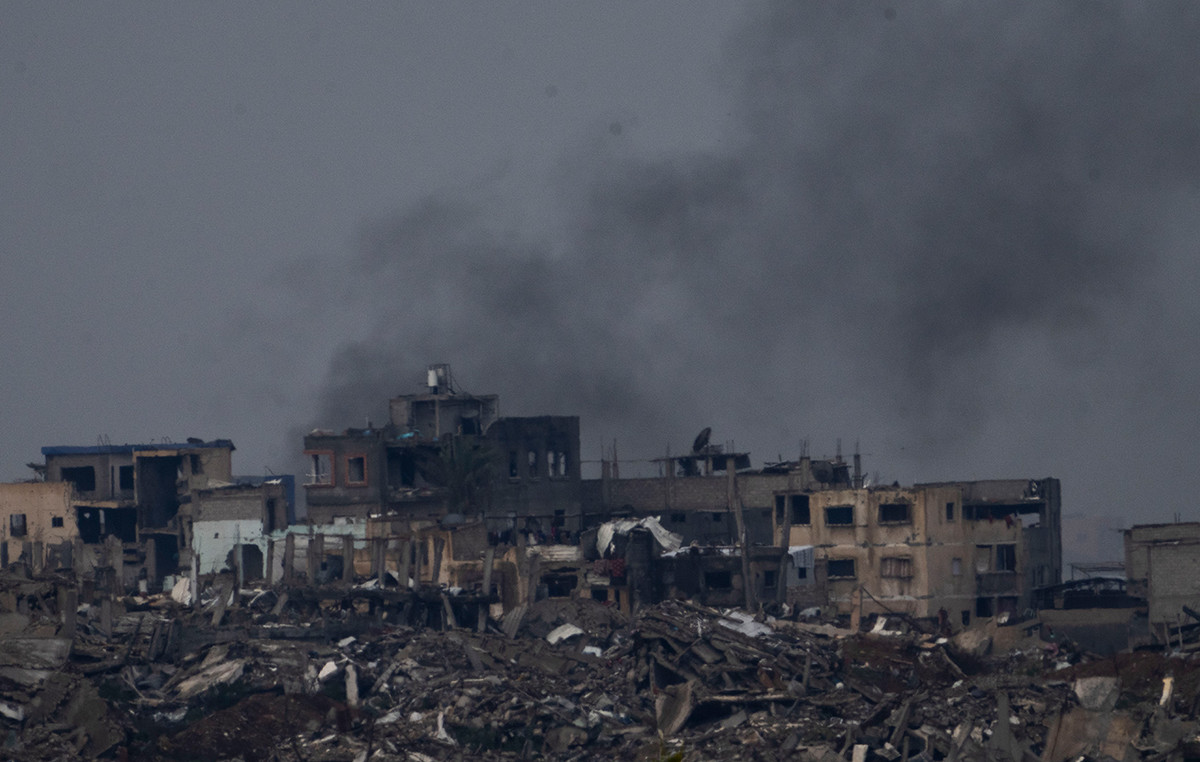Last winter in the Northern Hemisphere was one of intense circulation of respiratory viruses, dominated by outbreaks of respiratory syncytial virus (RSV), influenza and Covid-19. But as the landscape began to improve, a little-known virus that causes many of the same symptoms – such as a lower lung infection, dry cough, runny nose, sore throat and fever – gained momentum.
Cases of human metapneumovirus, or hMPV, increased this spring (north of the globe), according to the US Centers for Disease Control and Prevention (CDC) respiratory virus surveillance systems. It has filled hospital intensive care units with young children and the elderly who are the most vulnerable to these infections. At its peak in mid-March, nearly 11% of samples tested were positive for the virus, a number about 36% higher than the average pre-pandemic seasonal peak of 7% test positivity.
However, most people who contracted the infection probably didn’t even know it. Sick people are generally not tested outside of a hospital or emergency room. Unlike Covid-19 and the flu, there is no vaccine for hMPV or antiviral drugs to treat it. Instead, doctors care for people who are seriously ill and seek to alleviate their symptoms.
an underestimated threat
Studies show that hMPV causes as much impact in the United States each year as the flu and a closely related virus, RSV. A study of patient samples collected over 25 years found that it was the second most common cause of respiratory infections in children after RSV.
A study conducted in New York over four winters showed that it was as common in hospitalized elderly people as RSV and the flu. Like these infections, hMPV can lead to critical care and fatal cases of pneumonia in older individuals.
Leigh Davidson contracted human metapneumovirus during a family celebration in early April. Two weeks later, she was coughing so violently that she couldn’t talk on the phone.
“I couldn’t get more than a few words out,” said Leigh, 59, an entertainment attorney in Baltimore. “I would break into a severe, violent cough to the point where I literally almost threw up.”
Her cough was so constant and deep that she was convinced she had finally caught the coronavirus after managing to avoid it during the pandemic. But she has had six rapid tests for Covid-19, all of which have come back negative.
Leigh is immunocompromised, so she has been cautious during the pandemic. Worried about pneumonia, she had an X-ray at a radiology clinic near her home and was told everything was fine.
However, her doctor was not satisfied and referred her to an emergency room for further tests. Blood tests determined that she had hMPV.
“I was like, ‘What?’ Because it looks really terrible,” Leigh said. “I never heard about it.”

Human metapneumovirus was discovered by Dutch virus researchers in 2001. They had 28 samples from children in the Netherlands with unexplained respiratory infections. Some of the children became very ill and required mechanical ventilation, but they did not test positive for any known disease-causing agent, or pathogen.
The researchers grew the samples in various cell types from monkeys, chickens and dogs, and then analyzed the cultures under an electron microscope. They saw something that looked structurally related to the paramyxoviridae family, a group of viruses known to cause respiratory illnesses like measles, mumps, and respiratory syncytial virus, or RSV.
A closer look at the virus’s genes showed a close relative: the avian metapneumovirus, which infects birds. The new virus has been dubbed the human metapneumovirus. Scientists believe it likely migrated from birds to humans at some point and evolved from there.
When the researchers tested blood samples from 72 patients that had been stored since 1958, they all showed evidence of exposure to the mystery virus, indicating that it had been circulating in humans, undetected, for at least the previous half-century.
Doctors and patients in the dark
Respiratory infections are the leading cause of death for children around the world and the main reason why little ones are hospitalized in the United States, but scientists don’t know what causes a large number of them, says Dr John Williams, a pediatrician at the University of Pittsburgh, who has spent his career studying vaccines and treatments for hMPV.
Williams says there were extensive epidemiological studies done in the 1950s and 1960s investigating the causes of respiratory infections.
“Basically, they could only identify a virus in people about half the time. And then the question was, ‘OK, what about the other half?
But nobody knows about it. Williams calls it “the most important virus you’ve never heard of”.
“These are the three main viruses,” he said. “These are the big three in children and adults, the ones most likely to put people in the hospital and cause serious illness, most likely to sweep nursing homes and make seniors really sick and even kill them.”
As hMPV testing is rarely done outside of hospitals, it is difficult to know the true burden of disease. Blood tests indicate that most children have had the infection by age 5.
A 2020 study published in the Lancet Global Health estimated that among children under age 5, there were over 16 million hMPV infections in 2018, over 600,000 hospitalizations, and over 16,000 deaths.
Infection generates weak or incomplete immune protection, however, and humans are reinfected throughout their lives.
Companies are working on vaccines against the virus. Covid-19 vaccine maker Moderna has just completed an initial study of an mRNA vaccine against hMPV and parainfluenza, according to the Clinicaltrials.gov website.
The CDC recommends that clinicians consider testing for hMPV in the winter and spring when the organism tends to peak.
Doctors don’t order tests mainly because of a lack of knowledge about the virus, Williams said, but also because a test is unlikely to change the care that would be given to a patient. This would help them rule out other causes that have dedicated treatments like Covid-19 or the flu.
Leigh said hMPV led to a serious bout of bronchitis. She was briefly admitted to the hospital for observation. She eventually got better but was sick for a month.
The lawyer has had respiratory infections before, of course, but she is particularly happy to have overcome the human metapneumovirus, she said – “That was really the worst I have ever experienced”, she concluded.
Source: CNN Brasil
I am an experienced journalist and writer with a career in the news industry. My focus is on covering Top News stories for World Stock Market, where I provide comprehensive analysis and commentary on markets around the world. I have expertise in writing both long-form articles and shorter pieces that deliver timely, relevant updates to readers.







